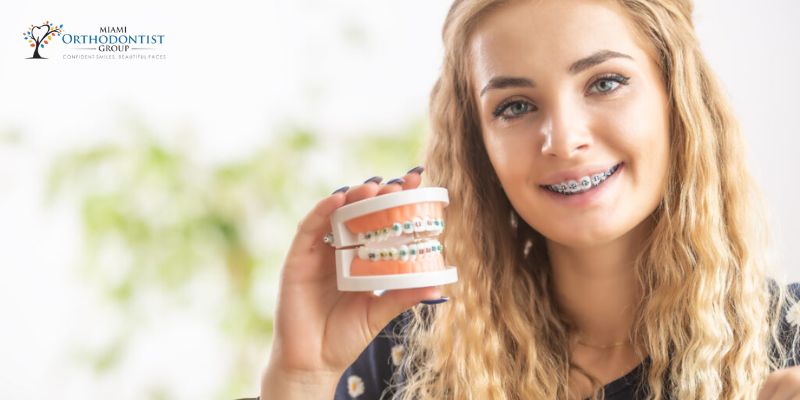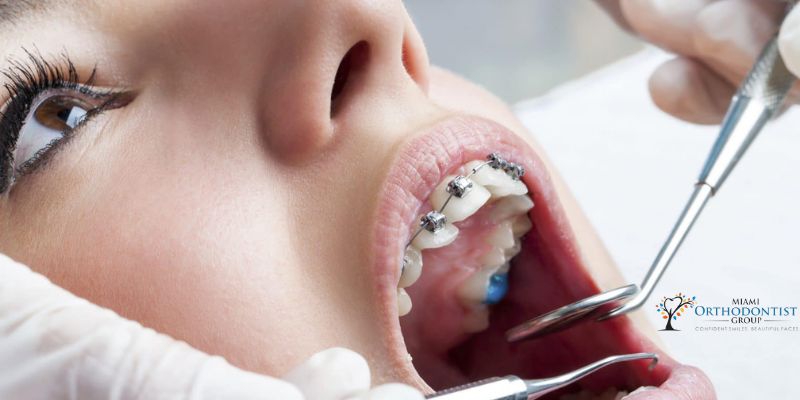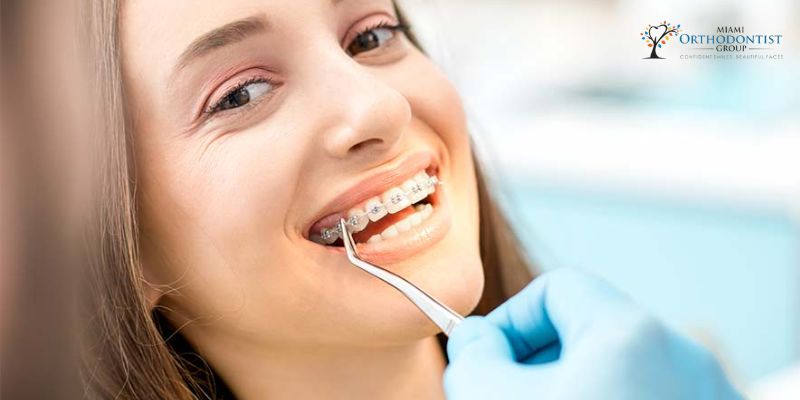Orthodontic treatment plays a crucial role in enhancing the oral cavity’s aesthetic appeal and functionality. Among the various factors addressed during orthodontic interventions, achieving proper bite alignment is one of the critical objectives. Bite alignment refers to how the upper and lower teeth come together when the jaws close. This seemingly simple aspect carries significant implications for oral health, facial harmony, and overall well-being. This article will delve into the importance of bite alignment in orthodontic treatment and its multifaceted impact on patients.
The Importance of Bite Alignment in Orthodontic Treatment
Optimal Functionality and Comfort
 Bite alignment ensures optimal functionality and comfort within the oral cavity. When the upper and lower teeth do not align correctly, it can lead to various functional issues, such as difficulty chewing, speaking, and maintaining proper oral hygiene. Misaligned bites, such as overbite, underbite, and crossbite, can cause uneven pressure on teeth, contributing to premature wear and tear and an increased risk of dental issues like cavities and gum disease. By addressing bite misalignments, orthodontic treatment improves the efficiency of daily oral functions and minimises the risk of long-term dental complications.
Bite alignment ensures optimal functionality and comfort within the oral cavity. When the upper and lower teeth do not align correctly, it can lead to various functional issues, such as difficulty chewing, speaking, and maintaining proper oral hygiene. Misaligned bites, such as overbite, underbite, and crossbite, can cause uneven pressure on teeth, contributing to premature wear and tear and an increased risk of dental issues like cavities and gum disease. By addressing bite misalignments, orthodontic treatment improves the efficiency of daily oral functions and minimises the risk of long-term dental complications.
Additionally, misaligned bites can contribute to temporomandibular joint (TMJ) disorders, leading to jaw pain, headaches, and facial discomfort. Orthodontic interventions focusing on achieving proper bite alignment can alleviate these symptoms by ensuring the jaw joints and muscles function harmoniously. Patients undergoing orthodontic treatment often report enhanced comfort and improved oral function due to corrected bite alignment, highlighting its pivotal role in optimising the oral structures’ overall functionality.
Aesthetic Appeal and Facial Harmony
 Beyond functional considerations, bite alignment significantly influences an individual’s aesthetic appeal and facial harmony. The alignment of the teeth and the relationship between the upper and lower jaws contribute to the overall symmetry and balance of the face. An aesthetically pleasing smile is not merely about straight teeth; it also involves achieving the right bite relationship. Orthodontic treatment aims to align the teeth and jaws in a way that enhances facial aesthetics, creating a smile that complements the face’s natural contours.
Beyond functional considerations, bite alignment significantly influences an individual’s aesthetic appeal and facial harmony. The alignment of the teeth and the relationship between the upper and lower jaws contribute to the overall symmetry and balance of the face. An aesthetically pleasing smile is not merely about straight teeth; it also involves achieving the right bite relationship. Orthodontic treatment aims to align the teeth and jaws in a way that enhances facial aesthetics, creating a smile that complements the face’s natural contours.
Moreover, addressing bite misalignments can positively impact facial proportions, reducing the appearance of asymmetry or disproportions in the jawline. By optimising bite alignment, orthodontic treatment contributes to a more attractive and harmonious facial appearance, boosting the confidence and self-esteem of individuals. The transformative effects of achieving proper bite alignment extend beyond the oral cavity, influencing the overall perception of an individual’s facial aesthetics and leaving a lasting positive impact on their quality of life.
Prevention of Dental Issues
Proper bite alignment is instrumental in preventing many dental issues arising from misaligned teeth and jaws. When the teeth do not come together correctly, there is an increased risk of developing gaps, overcrowding, and uneven wear on the tooth surfaces. These conditions create breeding grounds for plaque and bacteria, raising the likelihood of cavities, gum disease, and other oral infections. Orthodontic treatment, focusing on bite alignment, is a preventive measure against these potential dental problems by ensuring that teeth are properly spaced and aligned for efficient cleaning and maintenance.
Furthermore, achieving the correct bite alignment can alleviate issues related to the occlusion, such as open or deep bites. An open bite occurs when the upper and lower front teeth do not meet adequately, leaving a gap between them. Conversely, a deep bite occurs when the upper front teeth excessively overlap the lower front teeth. Both conditions can lead to uneven wear, jaw discomfort, and speech impediments. Orthodontic interventions tailored to correct these misalignments play a pivotal role in preventing the progression of such bite-related issues, thereby safeguarding the long-term oral health of individuals.
Enhanced Long-Term Stability
Bite alignment is not only essential during the active phase of orthodontic treatment but also crucial for ensuring the stability of results in the long term. After removing orthodontic appliances, maintaining the correct bite alignment becomes a priority to prevent relapse. Without proper alignment, teeth may shift back to their original positions, diminishing the effectiveness of the treatment. Orthodontic treatment plans, which incorporate strategies to stabilise bite alignment, often include using retainers. These devices help to retain the corrected positions of the teeth and prevent undesirable shifts, ensuring that the results achieved through orthodontic intervention are maintained over the years.
Long-term stability is vital for the aesthetic aspects of the smile and the overall investment in orthodontic care. By emphasising the importance of bite alignment in post-treatment care, orthodontic professionals contribute to the sustained success of the intervention, providing patients with lasting benefits and minimising the need for additional corrective measures. The emphasis on stability underscores the comprehensive approach that orthodontic treatment takes in addressing not just immediate concerns but also ensuring enduring results for the well-being of patients.
Speech Improvement and Confidence Boost
Bite alignment plays a pivotal role in speech clarity and articulation. Misaligned bites can contribute to speech impediments, affecting the pronunciation of certain sounds. For instance, individuals with open bites may struggle to pronounce words containing the letter “s” or “z,” while those with deep bites may experience difficulties with certain consonant sounds. By addressing bite misalignments, orthodontic treatment aids in improving speech patterns and fostering clear communication.
The impact of improved speech extends beyond mere vocalisation—it significantly influences an individual’s confidence and social interactions. A properly aligned bite enables individuals to speak confidently, reducing self-consciousness about potential speech difficulties. As orthodontic treatment corrects bite issues and enhances speech clarity, it contributes to developing strong communication skills. It boosts self-esteem, allowing individuals to express themselves more confidently in various personal and professional settings.
Overall Health and Well-being
The relationship between bite alignment and overall health extends beyond the confines of the oral cavity. Misaligned bites can lead to issues such as chronic headaches, neck pain, and even problems related to digestion. When the teeth do not come together correctly, it can strain the jaw muscles and joints, contributing to headaches and discomfort. Orthodontic treatment aimed at achieving optimal bite alignment can alleviate these symptoms, promote a sense of well-being, and improve individuals’ overall quality of life.
Moreover, the connection between oral health and systemic health is well established. Conditions such as gum disease have been linked to various systemic issues, including cardiovascular diseases and diabetes. By addressing bite misalignments and ensuring proper oral hygiene, orthodontic treatment is preventive in reducing the risk of systemic health issues. The holistic approach of orthodontic care, considering both the functional and health aspects of the oral cavity, underscores the importance of bite alignment in promoting overall well-being.
Conclusion
In conclusion, the significance of bite alignment in orthodontic treatment goes beyond the confines of the oral cavity, influencing speech, confidence, and overall health. By addressing bite misalignments, orthodontic professionals contribute not only to the immediate goals of a straighter smile but also to the broader aspects of an individual’s life.


